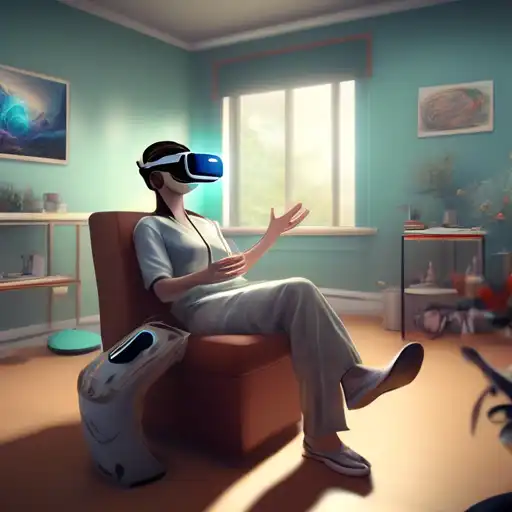The Transformative Role of Virtual Reality in Therapeutic Practices
Virtual Reality (VR) technology has transcended its initial entertainment-centric applications to become a groundbreaking tool in the field of therapy. By immersing patients in controlled, virtual environments, therapists are now able to treat a variety of psychological and physical conditions more effectively. This article explores the innovative ways VR is being utilized in therapeutic settings, offering new hope and possibilities for patients worldwide.
Understanding VR Therapy
VR therapy, also known as virtual reality exposure therapy (VRET), involves the use of VR technology to simulate environments or situations that are tailored to the therapeutic needs of the patient. This method has been particularly effective in treating phobias, PTSD, and anxiety disorders by allowing patients to confront their fears in a safe and controlled setting.
Applications of VR in Therapy
The applications of VR in therapy are vast and varied. Below are some of the most notable uses:
- Mental Health Treatment: VR has been used to treat conditions such as PTSD, anxiety, and depression by exposing patients to virtual scenarios that help them process and overcome their issues.
- Physical Rehabilitation: Patients recovering from strokes or injuries use VR to regain motor skills through interactive games and exercises that make physical therapy more engaging.
- Pain Management: VR distracts patients from pain by immersing them in calming or engaging virtual environments, reducing the need for medication in some cases.
- Social Skills Training: Individuals with autism or social anxiety can practice and develop social skills in virtual settings that mimic real-life interactions.
Benefits of VR Therapy
The benefits of incorporating VR into therapeutic practices are significant. VR therapy offers a safe environment for patients to face their fears, provides customizable scenarios to meet individual needs, and can be more cost-effective than traditional methods in the long run. Additionally, the immersive nature of VR enhances patient engagement and motivation, leading to better outcomes.
Challenges and Considerations
Despite its advantages, VR therapy is not without challenges. The cost of VR equipment and the need for specialized training for therapists can be barriers to adoption. There are also concerns about the potential for VR to induce motion sickness or disorientation in some users. However, as technology advances and becomes more accessible, these challenges are likely to diminish.
The Future of VR in Therapy
The future of VR in therapy looks promising, with ongoing research and development paving the way for more innovative applications. As VR technology becomes more sophisticated and affordable, its use in therapeutic settings is expected to grow, offering new avenues for treatment and recovery.
For those interested in exploring more about how technology is transforming healthcare, check out our article on The Impact of AI on Modern Medicine.
In conclusion, VR is revolutionizing the field of therapy by providing innovative, effective, and engaging treatment options. Its ability to simulate real-life scenarios in a controlled environment offers unparalleled opportunities for healing and recovery, making it a valuable tool in the therapeutic arsenal.
